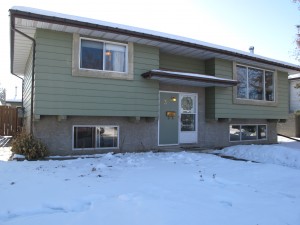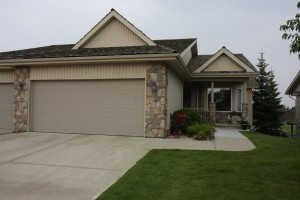 Is there a dog or cat living in your Spruce Grove, Stony Plain, Parkland County or Edmonton area home? According to a 2008 Ipsos-Reid survey as reported in the Canadian Veterinary Journal, roughly 56% of Canadian households have a dog or a cat as a pet.
Is there a dog or cat living in your Spruce Grove, Stony Plain, Parkland County or Edmonton area home? According to a 2008 Ipsos-Reid survey as reported in the Canadian Veterinary Journal, roughly 56% of Canadian households have a dog or a cat as a pet.
Animals make their presence known in your home, and not in a good way, through scratches on walls, floors and furniture, stains on carpets, dander and allergens in the air, and various unsavory odors. But there are ways to keep your house in good shape and all residents happy with a few smart and relatively inexpensive adjustments. The most important advice is to choose the right materials and work with your animal’s natural instincts and needs.
Keep it clean! Home and pet, that is.
- First, vacuum often. It’s a basic fact of life that dogs and cats shed. Invest in a decent vacuum cleaner, preferably with HEPA filter, and plan on going over carpets and upholstery about twice a week or more.
- Reduce the amount of clutter in your rooms. Each object you remove from a room means one less object that gets covered in dust, dander and pet hair.
- An item that is well worth the cost is a HEPA furnace filter which removes huge quantities of dust, dander and allergens from the air.
- Use enzyme cleaners such as Nature’s Miracle Stain and Odour Remover when dealing with pet messes.
- You might also want to purchase some special furniture covers designed with pets in mind. (See these Pet Protector Covers available from Sears Canada). Easier to wash these than to shampoo the furniture.
- Keep your pet clean and well-groomed. This means regular brushing, nail-clipping, bathing and the like. If you can remove some of the hair and the oil and dirt it holds before it ends up on your floors and furniture, your house will be cleaner. Trimmed nails are less likely to scratch floors or snag upholstery.
It’s the nature of the beast! Work with your pets’ natural inclinations to mold their behavior to what’s acceptable. Your dog, for example, wants to please you so will tell you when he wants out and will also adapt readily to his own bed or crate. Supply a clean litter box and a scratching post for your cat and watch her take to them. If you find your animal jumping on the couch to look out the window, consider moving that couch away from the window and possibly installing a platform that bolts to the window sill to accommodate your pet’s preference.
Choose the right fabrics. If you have pets, you already know to stay away from silk and velvet. If you’re shopping for new furniture, consider something like Crypton or UltraSuede, which are wonderfully stain-resistant and durable. Leather will scratch, but it is easy to clean and long-lasting. Forget the dry-clean-only bedding and opt for washable everything because you know your pet will end up on your bed at some point.
Get rid of fabric altogether, where you can. Replace draperies with wood blinds, for example.
Choose the right flooring. Carpet and pets are a bad combination. Carpet soaks up “accidents”, absorbs odors, and traps hair and dander – yuck! If possible, consider replacing wall-to-wall carpeting in your home with any of the variety of hard-surface flooring on the market today, and bonus! these choices are very fashionable at the moment. The best option for a pet-proof home is ceramic tile because it’s pretty much impervious to anything your pet can do! Other easy to clean and durable alternatives include painted concrete, brick, high-end linoleum, or hardwood (but be aware that big dogs can scratch wood).
Neutrals work best. Dramatic color schemes will show dirt, hair, and wear and tear more than colors such as gray, taupe and cream. Luckily, neutrals are in style now for everything from paint on the walls to furniture, carpets and counter tops. If you’re planning to re-paint, remember to choose a washable satin finish, and look for low or no-VOC (volatile organic compounds) paints. Both you and your pet will benefit from not breathing toxic fumes.
Consider some of these specialty products and home renovations:
- Disguised litter box, partially covered and resembling furniture. Keep the odor down by placing in a well-ventilated area if you can, and by cleaning it frequently. The litter box might even be located in a separate room, such as a garage or utility space, with access through a secret cat door hidden inside a cabinet.
- Built-in bench with removable cover next to an outside door: Provides convenient seating for people to put on and remove shoes, and the inside provides storage for pet toys, balls, leashes, etc.
- Indoor pet retreat or special mudroom could be a corner or even a whole room located by an outside back door. Automatic feeders and drinking fountains and even doggy showers are often features of these spaces. Some have lockable exterior access doors designed for your pet to go inside and out. Most have specialty storage for all pet-related items such as food, chew toys, towels, etc.
- Heated floors. Good for animals and people!
- Cat ramps are a series of shelves resembling stairs running up a wall to just below the ceiling where they meet a longer shelf where cats can run or recline.
- Portable pet stairs to help small animals access furniture.
- A doggy overlook is a square opening on the second floor allowing your dog to stick his head through to keep watch on his owners below.
- Outdoor dog and cat runs.
- For more ideas like these, see my Pinterest board “Pets and Your Home”.
What special things do you do in your home to accommodate your pets while keeping your home clean and stylish? I’d love to hear from you. Call or text me at 780-910-9669, email me at barry@barryt.ca, or contact me here.
 When people ask me if it’s a good time to buy a home in Spruce Grove, Stony Plain, Parkland County or the Edmonton region, I usually tell them that the best time to buy is when they’re ready. And that answer is true whether the market is up or down and whether the market favors buyers or sellers.
When people ask me if it’s a good time to buy a home in Spruce Grove, Stony Plain, Parkland County or the Edmonton region, I usually tell them that the best time to buy is when they’re ready. And that answer is true whether the market is up or down and whether the market favors buyers or sellers.















